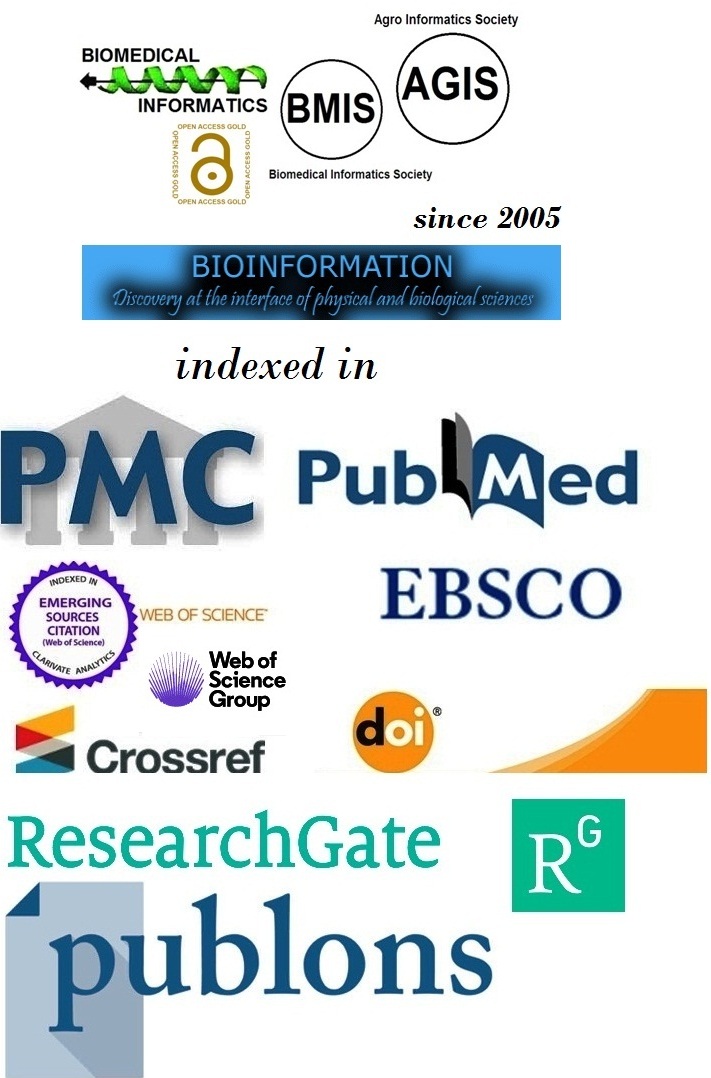Title
Molecular docking analysis of tyrosinase with compounds from poly-herbal formulation for vitiligo treatment
Authors
Karpagambal Ramamoorthy1,*, Manjari Venkatraman1,*, Abarna Balasubramani1, Raghavi Marimuthu1, Kalaivanan Karuppan2 & Nithyashree Murugappa3
Affiliation
1Department of Nanju Maruthuvam, National Institute of Siddha, Chennai - 600047, Tamil Nadu, India; 2Department of Siddha Medicine, Government Primary Health Centre, Tiruvannamalai, Tamil Nadu, India; 3Department of Siddha Medicine, BSMS – II Professional, Nandha Siddha Medicial College and Hospital, Pitchandipalayam, Erode - 638052, Tamil Nadu, India; *Corresponding authors
Karpagambal Ramamoorthy - E - mail: karpagambsms97@gmail.com
Manjari Venkatraman - E - mail: drmanjarimd@gmail.com
Abarna Balasubramani - E - mail: abu.abarna96@gmail.com
Raghavi Marimuthu - E - mail: muthuraghavi92@gmail.com
Kalaivanan Karuppan - E - mail: drkalaimds@gmail.com
Nithyashree Murugappa - E - mail: nithyashree09042004@gmail.com
Article Type
Research Article
Date
Received March 1, 2025; Revised March 31, 2025; Accepted March 31, 2025, Published March 31, 2025
Abstract
Vitiligo is an acquired depigmentary disorder caused by the absence of melanocytes, affecting 0.1% to 2% of the global population, including both adults and children. Therefore, it is of interest to report the molecular docking analysis of tyrosinase (PDB: 1WX3) with compounds from poly-herbal formulation for vitiligo treatment. Analysis shows that the lead bioactive compounds exhibit binding energies ranging from -3.10 Kcal/mol to -7.36 Kcal/mol having 2-6 hydrogen bond interactions with key amino acid residues in the target protein. Beta-sitosterol showed the highest binding affinity (-7.36 Kcal/mol), followed by Orientin (-7.06 Kcal/mol), and other compounds such as masilinic acid, luteolin, glycyrrhizin, corilagin, gallic acid, boeravinone B, and trigonelline. Thus, the phytochemicals in the poly-herbal formulation enhance the activity of the tyrosinase enzyme, supporting melanogenesis, making it a potential treatment for vitiligo.
Keywords
Anti-vitiligo, docking, mookirattai chooranam, siddha formulation, tyrosinase enzyme
Citation
Ramamoorthy et al. Bioinformation 21(3): 369-374 (2025)
Edited by
P Kangueane
ISSN
0973-2063
Publisher
License
This is an Open Access article which permits unrestricted use, distribution, and reproduction in any medium, provided the original work is properly credited. This is distributed under the terms of the Creative Commons Attribution License.
